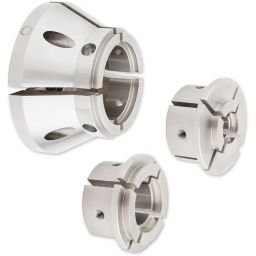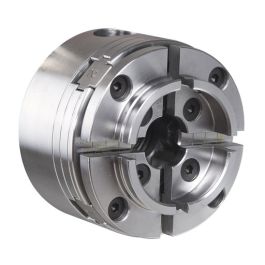Will, I believe you can do the same removal with the SuperNova Chucks. Not sure if cheaper to buy extra inserts than a new chuck, but remove one retainer pin and the inserts just screw out.
Also Vicmarc has a jaw set very similar to the Odonnell. If I remember the name I will post here, it not a pic. Name is Long Nose Spigot Jaws
Lance, The Vicmarc spigot jaws are not the same as the O’Donnell jaws. With the O’Donnell jaws you have inserts that give a great range and are dovetail. Vicmarc is limited in size.
Looking on google the Nova jaw slides are sold individually for $21.59. I can buy a set of 4 Axminster jaw slides for $54.99.
Having used both the Nova and Axminster I prefer the Axminster hands down. Have nothing bad to say about the Nova chucks, used them for years. Just didn’t want to keep buying chucks and storing them. Cheaper to buy the slides vs. a new chuck and much easier to store the jaws.

Axminster Woodturning O'Donnell Dovetail Jaws 3-in-1 Set
The O'Donnell Jaw 3 in 1 package comprises a 50mm O’Donnell Dovetail jaw along with both 38mm and 25mm O’Donnell inserts. Made from stainless steel to protect against corrosion, the inserts fit inside the 50mm jaws, each secured with a cap head screw,...
Last edited:

